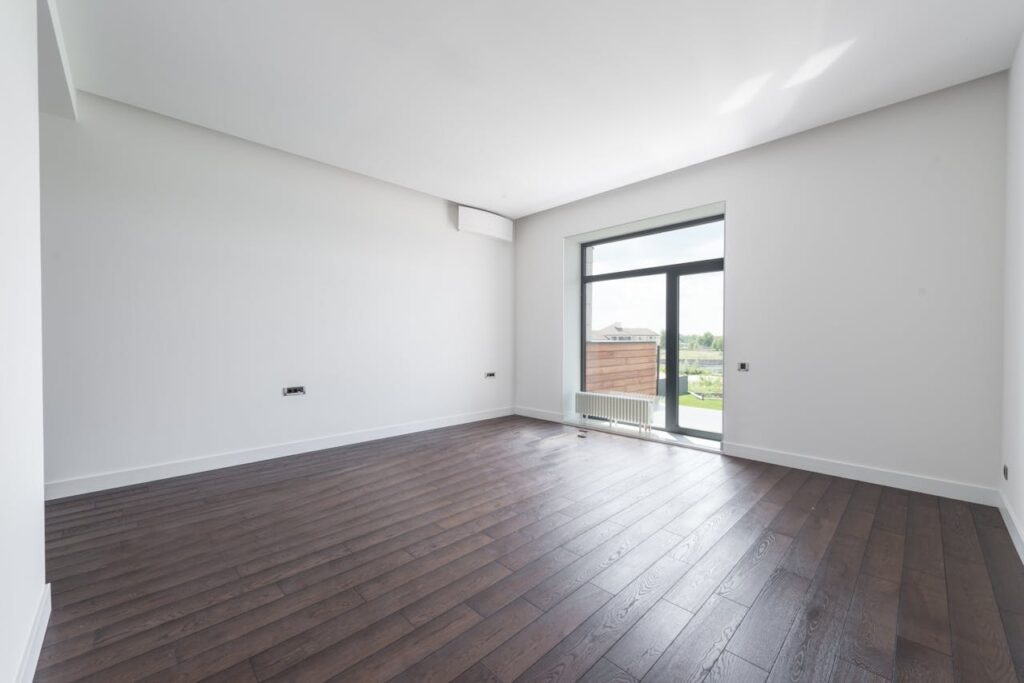Striking the perfect balance between aesthetics and functionality in floor planning can be a daunting task. How can you ensure your space not only looks visually appealing but also serves its purpose effectively? This blog post delves into practical tips and insightful strategies to help you achieve harmony between beauty and usability in your floor design. From optimizing layout efficiency to selecting the right decor elements, we’ve got you covered with expert advice to elevate your space. Discover how to create a seamless blend of style and practicality that enhances both the look and feel of your living or working environment.
Assess Your Needs
Identify Activities
When assessing your needs in floor planning, start by identifying specific activities the space must accommodate. Consider daily routines like cooking, dining, or working.
Consider how each area will be used and what features are necessary to support these activities effectively.
Prioritize Essential Features
Prioritize essential features that enhance usability while considering aesthetic preferences. Focus on elements like storage, lighting, and furniture placement.
Ensure that the layout allows for easy movement between areas and that essential features are easily accessible.
Evaluate Layouts
Evaluate how different layouts can meet both practical needs and visual appeal. Compare options such as open-concept designs versus compartmentalized spaces.
Consider how each layout impacts the flow of the space and whether it aligns with your aesthetic vision.
Focus on Functionality
Traffic Flow
Analyzing traffic flow is crucial to ensure easy movement throughout the space. Consider how people will navigate the area and arrange furniture to facilitate a smooth journey. Place key elements strategically to create a seamless pathway within the room.
Furniture Placement
Organize furniture placement thoughtfully to support daily activities and interactions. Position items in a way that enhances functionality and promotes a friendly design. Ensure that each piece serves a specific purpose, contributing to the overall design process.
Purposeful Elements
Incorporate purposeful elements into the design to avoid clutter and enhance the aesthetic appeal. Every item should have a specific function, whether it’s a focal point or a practical element. By integrating innovative design principles, you can achieve a balanced design that harmonizes aesthetics with functionality.
Choose the Right Colors
Design Choices
When selecting colors for floor planning, design choices play a crucial role in achieving a harmonious balance. Consider the overall theme and ambiance you want to create in each room. For instance, opt for soothing blues and greens in bedrooms for a calming effect, while vibrant yellows and oranges can energize living spaces.
Color Schemes
Explore various color schemes to find the perfect balance between aesthetics and functionality. Neutral tones like whites, grays, and beiges can serve as a versatile base, allowing you to experiment with bolder hues as accents. Monochromatic schemes create a sense of cohesion, ideal for open-concept floor plans.
Experiment with Accent Colors
To infuse personality into your space, don’t shy away from experimenting with accent colors. These pops of color can draw attention to architectural details or focal points within a room. For example, a deep red accent wall in a dining area can add warmth and sophistication to the space without overpowering it.
Texture
Incorporating texture into your color choices can elevate the visual appeal of your floor plan. Mix smooth surfaces with tactile elements like plush rugs, textured wallpapers, or woven fabrics to add depth and interest. This blend of textures not only enhances the aesthetic value but also contributes to the overall functionality of the space.
Right Balance
Achieving the right balance between different colors is essential for a cohesive design. Ensure that the chosen color palette complements the furniture and decor pieces in each room. For instance, if you have bold furniture pieces, opt for more subdued wall colors to prevent visual clutter and maintain a harmonious look.
Decisions
Make informed design decisions by considering how each color interacts with natural light throughout the day. Test paint samples on different walls to observe how they change under varying lighting conditions. This hands-on approach allows you to see firsthand how colors influence the atmosphere of your space.
Taste
Ultimately, your taste should guide your color choices when balancing aesthetics and functionality in floor planning. Trust your instincts and select colors that resonate with your personal style while also serving the practical needs of each room. Remember, there are no strict rules in design—experimentation is key to discovering what works best for you.
Use Natural Light
Positioning for Maximum Exposure
Position windows strategically to let in ample natural light. This helps create a pleasing environment while reducing the need for artificial lighting fixtures. By allowing sunlight into key areas, you can enhance both the aesthetics and functionality of the space.
Consider incorporating openings such as skylights or glass doors to further maximize daylight exposure. This not only brightens up the room but also creates a seamless connection between the indoor and outdoor spaces.
Light-Filtering Window Treatments
Opt for window treatments that filter light effectively. Choose options like sheer curtains or blinds that allow natural light to permeate the room while still maintaining privacy. These treatments strike a balance between openness and seclusion, contributing to a harmonious blend of aesthetics and functionality.
To avoid overpowering the space with heavy drapes, opt for lightweight materials that diffuse light softly throughout the room. This ensures a gentle and natural illumination that complements the overall design scheme.
Enhancing Brightness with Reflective Surfaces
Incorporate reflective surfaces strategically to amplify the brightness within the space. Materials such as mirrored finishes, glossy tiles, or metallic accents can bounce light around the room, creating an illusion of more expansive and well-lit interiors.
Add Visual Interest
Integrate Textures
Integrating a variety of textures in floor planning is crucial to create depth and visual interest. By incorporating different fabrics, materials, and finishes, you can add richness and dimension to the space. For instance, combining a plush rug with sleek leather furniture can create a dynamic contrast that enhances the overall aesthetic appeal.
Utilize Focal Points
Focal points such as striking artwork or statement furniture pieces play a key role in balancing aesthetics and functionality. These elements draw attention, add character, and create a sense of visual intrigue in the room. Placing a bold piece of art above a fireplace or incorporating a unique furniture item can instantly elevate the design scheme.
Balance Visual Elements
Achieving a harmonious balance of visual elements is essential to prevent overwhelming the space while maintaining interest. When selecting design pieces, consider their scale, color, and placement to ensure they complement each other cohesively. For example, pairing bold patterns with neutral tones or mixing different styles of furniture can create a visually appealing environment without appearing cluttered.

Incorporate Personal Style
Curate Decor
When designing your space, curate decor that reflects your unique tastes and lifestyle preferences. Incorporate elements that resonate with your individuality.
Personalize your home by showcasing personal collections or heirlooms as distinctive design features. These items add a personal touch and tell a story about your life.
Blend Style
Blend your personal style seamlessly with functional elements to achieve a harmonious balance between aesthetics and functionality. Consider the practical aspects of each design choice.
Integrate architectural styles and interior design practices that align with your personality and preferences. This fusion creates a space that is both visually appealing and practical for everyday use.
Follow Current Trends
Research Trends
Stay updated with the latest trends in floor planning to infuse your space with modern flair. Explore online resources, design magazines, and social media platforms for inspiration.
Embrace new materials, colors, and layouts that are gaining popularity in the interior design world. By incorporating these fresh trends, you can revitalize your living space and create a contemporary ambiance.
Adapt Styles
Take cues from popular trends and adapt them to suit your unique aesthetic preferences. Blend trendy elements with your personal style to achieve a harmonious balance between aesthetics and functionality.
Experiment with different textures, furniture arrangements, and decorative accents to create a space that reflects your personality while also maximizing usability.
Stay Flexible
Remain open to evolving trends that offer innovative solutions for optimizing both beauty and functionality in your floor planning. Flexibility is key to adapting to changing styles while ensuring that your space remains visually appealing and practical.
Consider mixing traditional design principles with modern trends to create a timeless yet contemporary look that stands the test of time.
Maximize Space
Implement Multi-Functional Furniture
Incorporating multi-functional furniture is crucial in floor space optimization. Pieces like sofa beds, ottomans with storage, or dining tables with extensions serve dual purposes, maximizing functionality in limited areas. These items allow for versatility in a room, adapting to various needs without overcrowding the space.
Utilize furniture that can be easily transformed to suit different activities. For example, a Murphy bed can be folded up during the day to create more living space and then pulled down for sleeping at night. This approach ensures that every piece of furniture serves a specific function, contributing to an efficient and well-utilized floor plan.
Create Built-In Storage Solutions
Built-in storage solutions are essential for reducing clutter and maintaining an organized space. Incorporate cabinets, shelves, and drawers into the design to store items out of sight, making the room appear more spacious. By utilizing vertical storage options, such as tall cabinets or floor-to-ceiling shelves, you can maximize storage capacity without sacrificing floor space.
Consider customizing storage solutions to fit the specific needs of each room. For instance, installing built-in bookshelves in a living room not only adds a decorative element but also provides a practical storage solution for books, decor items, and other belongings. Customized storage solutions ensure that every inch of available space is utilized effectively.
Utilize Vertical Space Creatively
To optimize floor space, think vertically and make use of wall-mounted features such as shelves, hooks, or floating desks. These elements help free up floor area by keeping surfaces clear and uncluttered. Hanging plants or artwork on walls adds visual interest without taking up valuable floor space.
Maximize storage potential by installing shelving units above eye level or using tall bookcases to store items vertically. This approach not only creates additional storage capacity but also draws the eye upward, making the room feel larger and more open. By strategically utilizing vertical space, you can achieve a balanced mix of aesthetics and functionality in your floor planning.
Think About Sustainability
Eco-Friendly Materials
Choose eco-friendly materials when planning your floor design to create a sustainable living space. Opt for materials like bamboo, cork, or reclaimed wood, which are renewable and have minimal environmental impact. These materials not only enhance the aesthetics of your space but also contribute to a healthier environment.
Energy-Efficient Lighting and Appliances
Implement energy-efficient lighting solutions and appliances in your floor plan to reduce your home’s environmental impact. LED lights, for example, consume less energy than traditional incandescent bulbs and last longer, reducing waste. Energy-efficient appliances such as refrigerators and washing machines help lower energy consumption, benefiting both the environment and your utility bills.
Longevity in Design
Designing with longevity in mind is crucial for balancing aesthetics and functionality in floor planning. Choose durable items that can withstand wear and tear over time, reducing the need for frequent replacements. By selecting long-lasting furniture and fixtures, you minimize waste and contribute to a more sustainable living environment.
Work with Professionals
Gain Insights
Consult with interior designers or architects to gain expert insights tailored to your needs. Professionals can provide valuable advice on how to balance aesthetics and functionality in floor planning. They offer solutions that align with your preferences and lifestyle.
Collaborate with experts to ensure a balanced approach between aesthetics and functionality. By working with professionals, you can optimize the layout of your space for both visual appeal and practicality.
Navigate Challenges
Leverage their experience to navigate complex design challenges and achieve your vision. Professionals have the expertise to recommend the best materials and design elements that enhance both the look and usability of your space.
Engaging with interior designers or architects allows you to explore creative ways to integrate aesthetics and functionality seamlessly. Their guidance can help you make informed decisions that elevate the overall design of your home.
Tailored Solutions
Working with professionals enables you to create a floor plan that caters to your specific needs as a user. They can customize the design to optimize the flow of your space, ensuring that every area serves a purpose.
Collaborating with experts also involves ongoing support even after the post-design phase. They can assist in implementing the floor plan, overseeing construction activities, and making any necessary adjustments along the way.
Final Remarks
In balancing aesthetics and functionality in floor planning, you’ve learned to prioritize your needs and focus on creating a space that not only looks good but also serves its purpose efficiently. By choosing the right colors, utilizing natural light, adding visual interest, and incorporating your personal style, you can elevate the appeal of your space while ensuring it remains practical. Following current trends, maximizing space, thinking about sustainability, and working with professionals will further enhance the outcome of your floor plan. Now armed with these insights, go ahead and create a space that not only reflects your style but also functions seamlessly for your everyday needs.
Design Your Perfect Floor Plan with Red White & Blue Construction!
Thinking about redesigning your floor plan? Your search ends here! Embark on an exciting journey to transform your Lafayette, CA home into the living space you’ve always dreamed of. With Red White & Blue Construction, every inch of your floor plan becomes a harmonious blend of beauty and functionality. Imagine innovative layouts that maximize your space’s potential, creating a natural flow that enhances both comfort and style. Whether you’re looking to optimize your current floor plan or dreaming up something entirely new, we’re here to bring your vision to life.
Our stellar reputation across the Bay Area speaks to our unwavering commitment to excellence, precision, and the highest standards of craftsmanship. We’re not just licensed contractors; we’re the creative minds behind your ideal living space. With transparent pricing and a client-first approach, you’re not just planning a floor—you’re laying the foundation for a whole new lifestyle. Choose Red White & Blue Construction and turn your home into a masterpiece. Design Your Perfect Floor Plan and connect with us today!
Disclaimer
The materials available on this website are for informational and entertainment purposes only and not to provide advice. You should obtain advice concerning any particular issue or problem from a professional. You should not act or refrain from acting based on any content included in this site without seeking legal or other professional advice. The information presented on this website may not reflect the most current building developments. No action should be taken in reliance on the information on this website. We disclaim all liability concerning actions taken or not taken based on any or all of the contents of this site to the fullest extent permitted by law.





